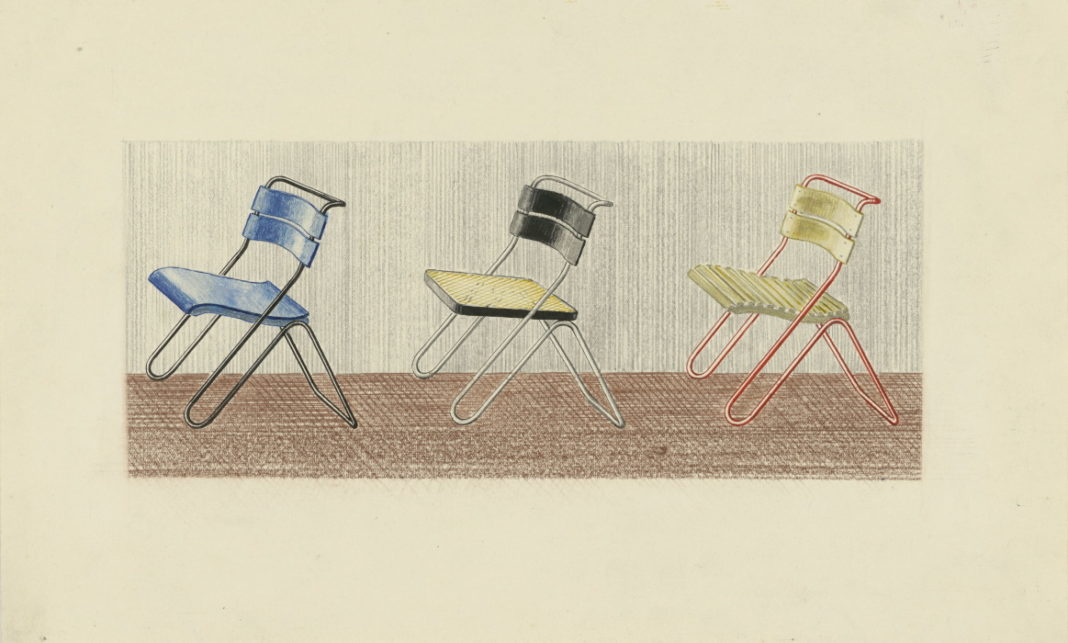For the first time in more than 30 years, a large solo exhibition is dedicated to furniture designer Erich Dieckmann (1896–1944), who taught at the Bauhaus and Burg Giebichenstein. The exhibition contains around 120 items of furniture, graphic works, designs, and drawings by Dieckmann, in dialog with works created recently by students and artists. It celebrates an influential designer who, like Marcel Breuer, experimented with forms and materials as well as developing ranges of standardized furniture based on strictly geometric forms. The exhibition will be shown in Berlin and Halle (Saale), the two cities of greatest significance in Dieckmann’s artistic career.
Image above: Erich Dieckmann, Drei Stühle, 1925-1935, pencil and coloured pencil on paper, © Staatliche Museen zu Berlin, Kunstbibliothek / Dietmar Katz
Erich Dieckmann came to Weimar in 1921 to study joinery at the Bauhaus. In 1925, when the Bauhaus moved to Dessau, Dieckmann stayed on in Weimar at the institution that succeeded it, the Staatliche Bauhochschule under Otto Bartning. In the same year, he was appointed head of the joinery workshop there. In 1931, he took a post at Burg Giebichenstein School of Applied Arts in Halle (Saale), following in the footsteps of many former Bauhaus students. He ran the joinery workshop there until his dismissal by the National Socialists in 1933. After that, he scraped a living from clerical and consultancy work, despite serious illness, but died suddenly in November 1944 at the age of only 48. Knowledge of Dieckmann’s relationship to National Socialism remains fragmentary, so any attempt to reconstruct it requires discernment. This makes Aya Soika’s latest research, which she presents in the exhibition catalogue, all the more important.

The exhibition features Dieckmann’s first chair – a wooden chair with cane webbing – which he designed as a student at the Bauhaus in 1923. It is followed by pieces that he developed for a standardized range of furniture around 1930 with the aim of fully furnishing rooms such as the study, the living room, and the bedroom. The corresponding designs and historical photos fill in the background to the furniture’s construction and illustrate its layout and effect in rooms. Dieckmann did not limit himself, however, to strictly geometric designs, moving on to create curvilinear models using bentwood, tubular steel, and rattan. Whatever the material, Dieckmann’s designs made full use of its creative potential. His tubular steel chairs and armchairs, in particular, display new curved, dynamic forms. His restrained wicker furniture designs were taken as prototypes for garden furniture, repeatedly copied or adapted by others.
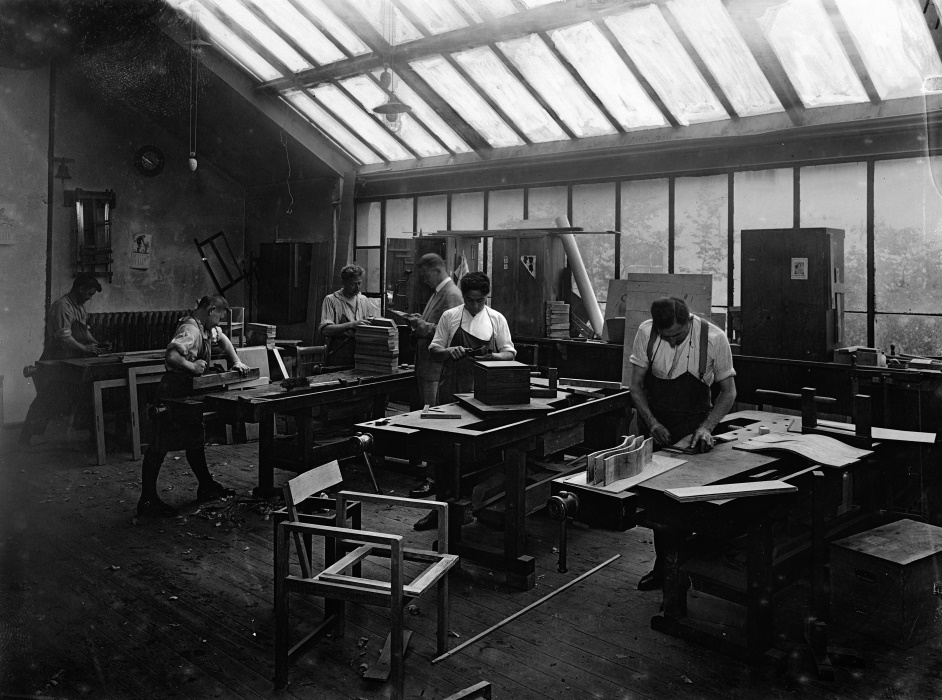
© Staatliche Museen zu Berlin, Kunstbibliothek / Photothek Willy Römer / Ernst Gränert
Exhibits have also been selected from Dieckmann’s legacy of drawings, which were acquired by the Kunstbibliothek. It comprises around 1,600 objects, which were digitized and indexed between 2017 and 2019 with the help of funds from the Federal Government Commissioner for Culture and the Media. Among those shown in the exhibition are compositional studies and draft designs for numerous pieces of furniture as well as watercolor renderings of ideal furniture arrangements. By showing the drawings in connection with the furniture, the entire creative process becomes apparent, from the early explorations of form, often quite abstract, through the functional and material design development to the production of the finished object.
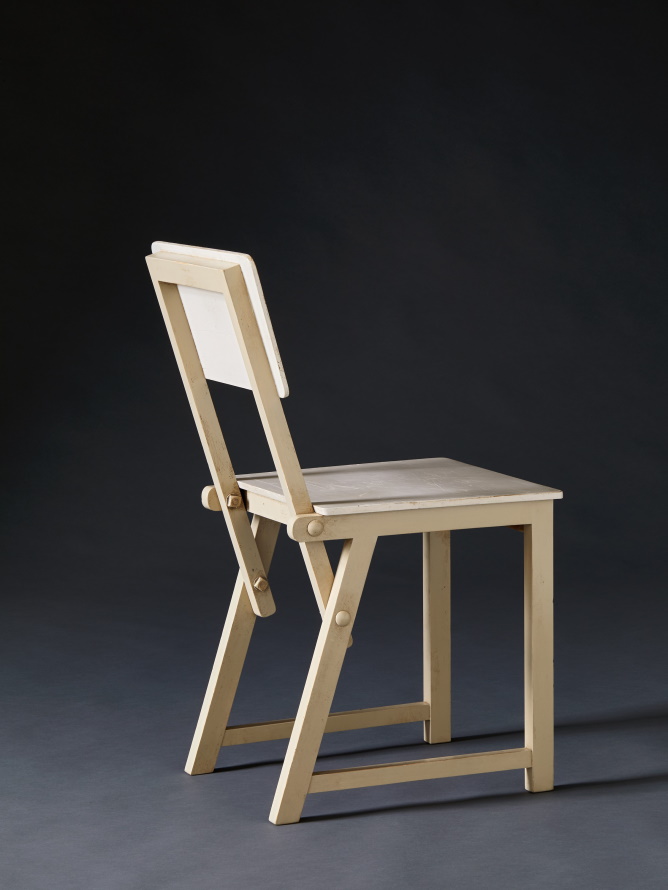
painted plywood, 83,5 x 40,55 x 52 cm, © Galerie Fiedler, Berlin, Photo: Martin Müller Fotografie
A section called “The Others” complements Dieckmann’s work with that of his contemporaries: designers who, like him, were largely active in the years between the first and second world wars. From the rich collection of the Kunstgewerbemuseum comes a selection of furniture and design objects by such names as Marcel Breuer, Mies van der Rohe, and Eckart Muthesius, which illustrates the diversity of furniture styles in this segment around 1930. In the third part of the exhibition, “Living like Dieckmann,” artist Margit Jäschke and designer Stephan Schulz explore how Dieckmann’s designs could be re-imagined in sustainable, artistic, and functional ways for life in the 21st century. To this end, they devised a kind of living space in which furniture by Erich Dieckmann could be reproduced and presented in a new light.
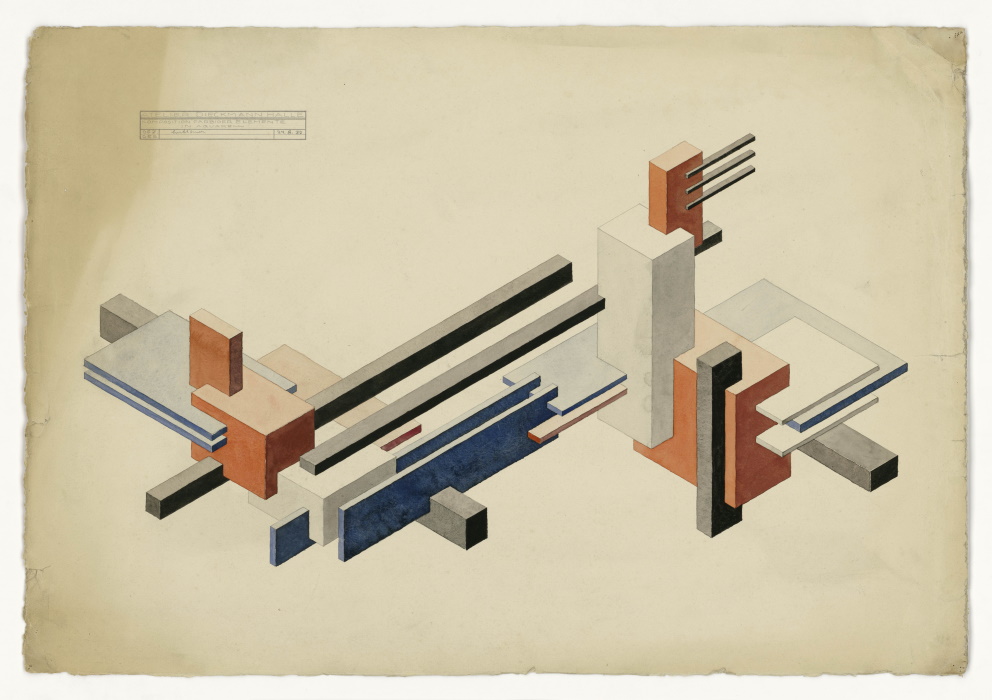
© Staatliche Museen zu Berlin, Kunstbibliothek / Dietmar Katz
The fourth part of the exhibition, “SITTING re-examined,” presents the results of a semester project by students at Burg Giebichenstein University of Art and Design in Halle – the successor to the school at which Dieckmann once taught. In response to his furniture, they have developed designs that take it into the present day. To gain inspiration and a factual basis on which to work, they studied historical objects, sketches, and items of furniture from the archives of the university and the City of Halle. Dieckmann’s furniture design was the subject of “Between Chairs,” the semester project of the Industrial Design course given by visiting professor Konrad Lohöfener. The sixteen students created pieces that seek not only to embody today’s perspectives but also to guess at the future. What did the visions of the Bauhaus and the Burg art school look like one hundred years ago? How do we sit today? Do the hopes and promises held out by classic modernism have anything to say to us today? Besides theoretical questions, it is worth looking closely at the construction details of the students’ furniture, which testify to the course’s focus on practical aspects of the design process. They show how Dieckmann’s design approach can be combined with the current means and technologies of product design, in particular the use of materials, design tools, manufacturing techniques, and ecologically friendly production processes. For further information, go to: www.burg-halle.de/zwischendenstuehlen
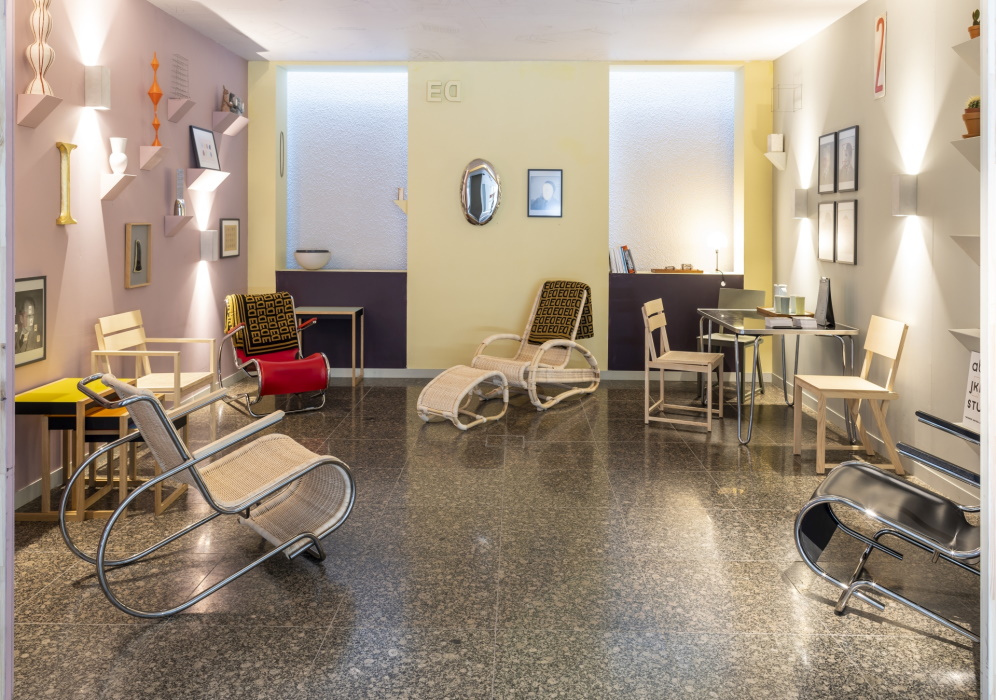
In addition, art education and art studies students under Professor Sara Burkhardt at Burg Giebichenstein University of Art and Design Halle have developed a card set for the exhibition, SITZEN – BURG Education BOX 02, which is published by the university press of Burg Giebichenstein University of Art and Design Halle. The cards offer suggestions for investigation and activities in both the private and the public spheres. They use a play-based approach to encourage individual or group observation, drawing, documentation, discussion, and sharing, based on the proposition that sitting can also get you thinking.
WHEN?
Special Exhibition: Saturday, 07. May to Sunday, 28. August 2022
Special Opening hours: Tue – Fri 10 am – 6 pm, Sat + Sun 11 am – 6 pm
WHERE?
Kulturforum, Kunstgewerbemuseum
Matthäikirchplatz
10785 Berlin-Tiergarten


